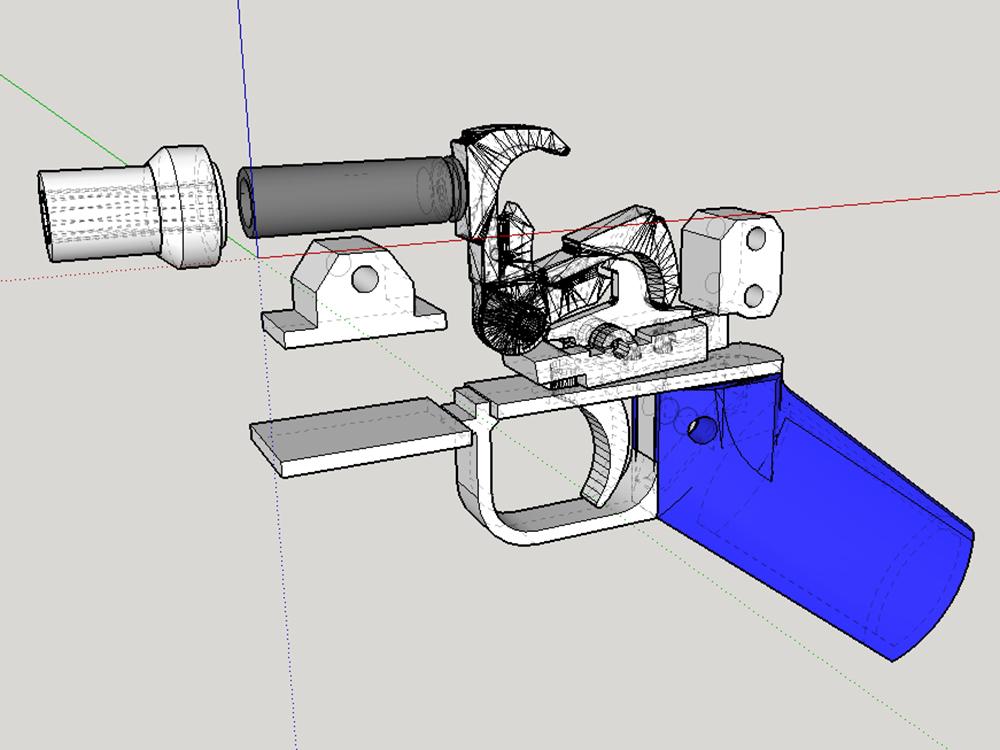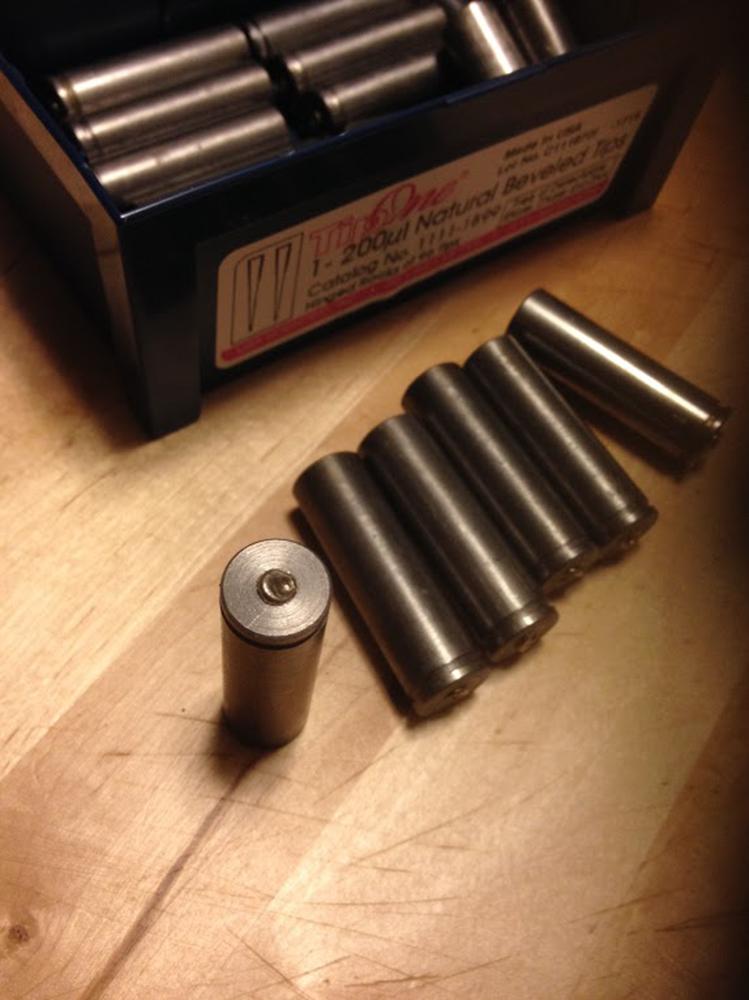Engineer Creates Special Bullets For 3D Printed Guns, Including Semi-automatics – Will it Lead to Wide Scale Production?

Crumling’s gun after firing 19 shots with his special bullets. –Michael Crumling via Wired
The 3D printed gun debate is certainly one which we will be hearing about for years to come. As the technology behind homemade firearms continues to improve, so will the weapons themselves. Ever since Cody Wilson 3D printed the Libertor and then test fired it, he has been caught in the middle of a firestorm, although he seemingly is enjoying every moment of it.
Despite his amazing accomplishment, law enforcement agencies around the globe are certainly getting a bit scared, whether they are showing it or not. The one main problem with 3D printed firearms, at least those fabricated on at-home 3D printers, is the fact that they are printed in plastic. The combination of a plastic gun with that of an exploding metal bullet will obviously cause some problems. For example, if you were to take both a plastic hammer and a metal hammer and bang there heads together multiple times, one can guess what the outcome would be. The plastic hammer would simply crumble and break apart, probably after the first hit, due to the much heavier, denser metal material that its opponent is made of. The same thing happens when a plastic gun fires an exploding metal bullet. The plastic just can’t hold up after multiple shots.
This has led a 25-year old machinist from Pennsylvania, named Michael Crumling, to develop a new type of round, designed specifically for firing from a 3D printed plastic gun. What he did was basically construct a thicker steel shell that can house the typical lead bullet. When fired, this shell acts as a buffer between the actual gunpowder of the round, and the weak plastic of the 3D printed gun. Much like how a motorcycle helmet protects our vulnerable skulls in instances of an accident, by absorbing the majority of the impact when one’s head makes contact with something more dense, the steel shell does the same for the plastic gun.

3D printable blueprint of Crumling’s gun with his special ammunition in dark grey –Michael Crumling via Wired
Crumbling tells WIRED.com that this new “bullet” allows a 3D printed, plastic gun to be fire over and over again without any signs of cracking or deformation, no matter how cheap the material used is.
“It’s a really simple concept: It’s kind of a barrel integrated into the shell, so to speak,” Crumling tells WIRED.com. “Basically it removes all the stresses and pressures from the 3-D printed parts. You should be able to fire an unlimited number of shots through the gun without replacing any parts other than the shell.”
Crumbling has already done quite a bit of testing on this new bullet, using a gun that he himself printed on his Printrbot 3D printer, with common PLA plastic filament. He fired 19 rounds and the gun held up quite nicely.

A slow-motion capture of Crumling’s gun firing his specially designed ammunition. Michael Crumling via Wired
If you think the idea of 3D printed guns with specially made bullets is scary, then you certainly won’t like the fact that Crumling also believes that his method of producing these bullets could enable the firing within 3D printed semi-automatic weapons as well.
““That’s the main reason I developed these, and that’s the next step,” Crumling tells Wired. “This is a building block for the future of 3-D printed firearms that will enable people to develop semiautomatic and—if you had the proper legal paperwork—even fully automatic weapons.”

Crumling’s special rounds –Michael Crumling via Wired
If there is one caveat for those against the 3D printing of firearms, as well as those who are scared to death by the possibilities created by this rather unavoidable technological advancement, Crumling’s steel-shelled rounds are not all that easy to produce. Even though the materials per round cost just 27 cents, it currently takes Crumling a whopping one hour to manufacture each one. Once manufactured though, they can be reused simply by repacking it with a new bullet, more gunpower and a primer.
Given the right demand for these bullets though, undoubtedly, someone somewhere will come up with an easier, more efficient method of creating them, and that’s when things may get a bit scary, whether you are a gun rights advocate, or completely against guns altogether.
What do you think about this latest development within the always entertaining, yet sometimes completely scary 3D printed gun scene? Discuss in the ‘bullets designed for 3D printed gun’ forum thread on 3DPB.com. Check out the video below via WIRED.com.


Subscribe to Our Email Newsletter
Stay up-to-date on all the latest news from the 3D printing industry and receive information and offers from third party vendors.
You May Also Like
Air Force Awards Fortius Metals $1.25M to Qualify 3D Printing Wire for Hypersonic Applications
AFWERX, part of the US Air Force Research Laboratory (AFRL), awarded a Direct-to-Phase II Small Business Innovation Research (SBIR) contract worth $1.25 million to Colorado’s Fortius Metals, to accelerate qualification...
US Air Force Awards JuggerBot $4M for Large-format Hybrid 3D Printing
Large-format 3D printer manufacturer JuggerBot has received a $4 million grant to develop a large format 3D printer, courtesy of the Under Secretary of Defense, Research and Engineering Manufacturing Technology...
Where Have All AM’s Unicorns Gone?
In the rapidly evolving world of 3D printing, startups valued at over a billion dollars, known as unicorns, once seemed as fantastical as the mythical creatures themselves. While a few...
How My Childhood Fascination with Planes Led to Investing in 3D Printing
My fascination with aerospace started young, and I started studying planes–identifying them in the sky and learning everything I could about how they work. Fast forward to my first week...































